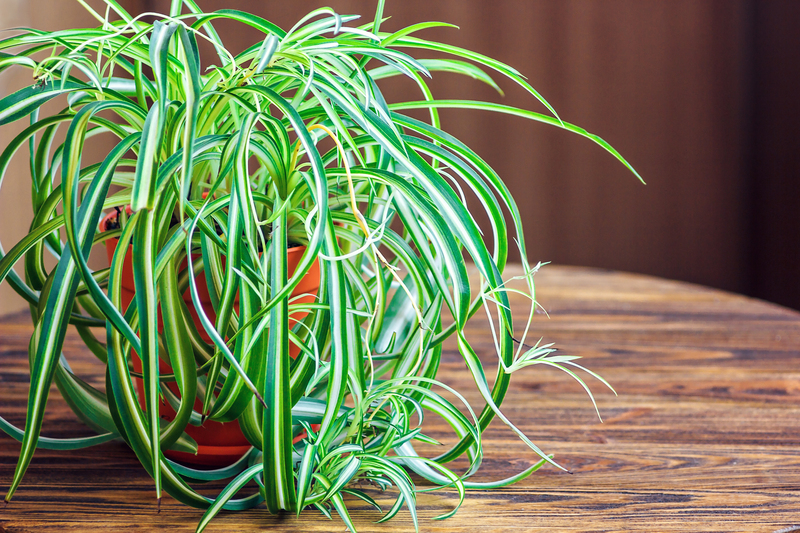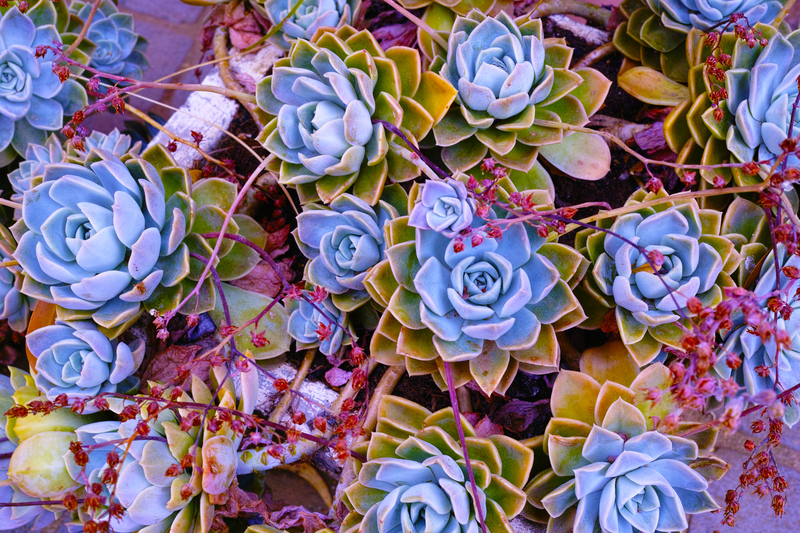Master the Art of Controlling Unwanted Weeds
Posted on 27/05/2025
Master the Art of Controlling Unwanted Weeds: The Ultimate Guide
Are you tired of stubborn weeds taking over your beautiful garden or lawn? Learning how to control unwanted weeds is essential for every gardener, farmer, and homeowner. In this comprehensive guide, you'll discover proven methods, expert tips, and natural solutions to master weed control and reclaim your landscape.

Understanding Unwanted Weeds: Why Are They a Problem?
Unwanted weeds are more than just an eyesore; they are invasive plants that compete with your desired plants for sunlight, nutrients, water, and space. If left unchecked, weeds quickly spread and can damage your lawn, vegetable plot, flower beds, or agricultural fields.
Common Types of Weeds
- Annual weeds - Complete their life cycle in one year (e.g., crabgrass, chickweed)
- Perennial weeds - Return every year from the same root system (e.g., dandelions, bindweed)
- Biennial weeds - Take two years to complete their life cycle (e.g., burdock, wild carrot)
Controlling unwanted weeds is crucial not just for aesthetics but also for the health, productivity, and longevity of your garden or agricultural land.
The Fundamentals of Weed Management
Before diving into specific weed control techniques, it's vital to understand the fundamentals. Mastering unwanted weed management starts with observation, identification, and a tailored approach that suits your unique landscape and plant types.
Key Principles of Weed Control
- Prevention: Stopping weeds before they become established
- Early Detection: Identifying and removing weeds while they are small
- Integrated Approach: Combining multiple methods for long-term success
- Persistence: Consistent and regular management to prevent regrowth
Effective Methods to Control Unwanted Weeds
There are a variety of techniques available for controlling unwanted plants, from manual removal and natural solutions to chemical and cultural practices. Let's explore the best strategies to help you master the art of weed control.
1. Manual and Mechanical Weed Removal
One of the oldest and most effective ways to tackle weeds is with your hands or using basic garden tools.
- Hand-pulling: Particularly effective when weeds are small or after rainfall softens the soil.
- Hoeing: Use a hoe to dislodge weeds at their base and prevent regrowth.
- Weed diggers and cultivators: Specialized tools can extract deep-rooted or perennial weeds without disturbing your crops.
Tip: Regularly patrol your garden. Removing weeds when they are young prevents them from reproducing and spreading seeds.
2. Mulching - A Natural Weed Barrier
Mulching is one of the most popular and eco-friendly techniques for controlling unwanted weeds. A thick layer of mulch blocks sunlight, thus starving weed seeds of the light they need to germinate.
- Organic mulch: Wood chips, straw, leaves, grass clippings
- Inorganic mulch: Landscape fabric, black plastic, rubber chips
Organic mulches have the added benefit of enriching your soil as they decompose. Apply mulch at least 2-3 inches deep for maximum effectiveness.
3. Proper Lawn and Garden Care
Healthy, dense lawns and robust plant beds leave little room for invasive weeds. By mastering yard maintenance, you create a natural weed defense system.
- Fertilize wisely: Targeted fertilization encourages strong plant growth, which outcompetes weeds.
- Mow high: Keeping grass at the right height (usually 3-4 inches) shades the soil, preventing weed seed germination.
- Water deep but infrequently: Encourages deep root systems in turf and crops, giving them an advantage over shallow-rooted weeds.
- Overseed thin spots: Dense grass prevents new weeds from taking hold.
4. Chemical Weed Control: Pros and Cons
Sometimes, herbicides are necessary for large infestations or persistent perennial weeds. Modern herbicides may be selective (targeting only certain plants) or non-selective (killing everything they touch).
- Pre-emergence herbicides: Applied before weed seeds germinate to prevent establishment.
- Post-emergence herbicides: Used on actively growing weeds for targeted removal.
Always follow label instructions and apply chemicals safely to minimize environmental impact. Opt for spot-treating specific areas instead of blanket-spraying, which may harm desired vegetation and soil life.
5. Organic and Natural Weed Control Methods
If you prefer a chemical-free approach, there are several safe, eco-friendly ways to control unwanted vegetation:
- Vinegar sprays: Household vinegar can desiccate young weeds, especially on sunny days.
- Boiling water: Pouring boiling water directly onto weeds is a quick, natural killer--just protect your other plants!
- Solarization: Cover infested areas with clear plastic for several weeks in full sun. The heat will kill weed seeds and roots.
- Corn gluten meal: Works as a natural pre-emergent, preventing seeds from sprouting.
Natural methods may require repeated applications but are safe for kids, pets, and pollinators.
Preventing Future Weed Infestations
Prevention is the key to long-term weed control success. By making your landscape less inviting for weeds, you reduce time and effort spent battling them.
Proactive Prevention Tips
- Inspect new plants: Always check nursery plants for weeds or seeds before planting.
- Clean your tools: Remove weed seeds from tools, boots, and gloves to prevent spreading.
- Control borders: Install edging and keep nearby wild areas in check to prevent weed encroachment.
- Compost wisely: Avoid composting weeds gone to seed unless your pile gets hot enough to kill the seeds.
- Rotate crops: Change crop locations each year to disrupt weed life cycles.
Specialized Weed Control for Lawns, Gardens, and Farmland
Effective weed management strategies may vary depending on your landscape:
Lawn Weed Control
- Spot-treat broadleaf weeds with selective herbicides or hand-pull.
- Avoid cutting grass too short--it stresses turf and gives weeds an opening.
- Aerate compacted soil to improve drainage and grass vigor.
Flower and Vegetable Garden Weed Control
- Maintain thick mulch layers between crops and flowers.
- Plant closely--dense plantings leave less room for weeds to emerge.
- Use row covers to suppress weeds and reduce maintenance in new beds.
Farm and Field Weed Control
- Practice cover cropping--certain crops like clover or rye suppress weeds naturally.
- Implement tillage judiciously--while it buries weeds, over-tillage can damage soil structure.
- Employ crop rotation and intercropping for holistic weed suppression.
Why You Should Remove Weeds Promptly
- Weeds rob your plants of nutrients and water, slowing their growth and reducing yields.
- Many weeds host pests and plant diseases that can spread to your prized plants.
- Uncontrolled weeds can quickly become seed banks, leading to years of future infestations.
The earlier you address weed issues, the less effort and fewer resources you'll spend down the line.

FAQs: Mastering the Art of Controlling Unwanted Weeds
What is the best time to remove weeds?
Spring and early summer, when the soil is moist and weeds are small, is the ideal season. Regular inspections throughout the growing season are crucial.
Are organic weed killers effective?
Organic solutions like vinegar, boiling water, or manual pulling are best for young weeds and smaller areas. Persistence is key for effectiveness.
How can I stop weeds from growing back?
Mulching, overseeding, proper fertilization, and regular monitoring make your landscape less susceptible to weed invasions.
Conclusion: Take Control and Win the Battle Against Weeds
Mastering the art of controlling unwanted weeds isn't about a single method or miracle product. Instead, it's the strategic combination of prevention, observation, effective removal techniques, and ongoing care that ensures lasting success.
By understanding weed biology, maintaining healthy gardens and lawns, and applying integrated control methods, you can reclaim your outdoor spaces--beautiful, productive, and virtually weed-free. Start today, and enjoy the satisfaction of a vibrant, weed-controlled landscape all year long!
- Observe and act early to prevent weed establishment.
- Use thick mulch and proper lawn care for passive, ongoing weed control.
- Combine manual removal with natural and chemical solutions as necessary.
- Be persistent and proactive--weed management is an ongoing process!
Take control today, and master the art of controlling unwanted weeds for a thriving, beautiful landscape!

